For half a century, one voice has pulsed through the heart of New York City—steady, sincere, and unmistakably familiar. Jim Kerr’s journey from Mi
For half a century, one voice has pulsed through the heart of New York City—steady, sincere, and unmistakably familiar. Jim Kerr’s journey from Michigan’s modest studios to the towering airwaves of Manhattan is not just a story of endurance—it’s a love letter to radio itself. From his early broadcasts as a teenage prodigy to commanding mornings at WPLJ and Q104.3, Kerr has guided generations with humor, humility, and heart. In a city that thrives on change, his presence has been a constant—a signal of connection in an age of noise. — USA RADIO MUSEUM
_____________________
Introduction
Michigan-Born, Radio-Bound
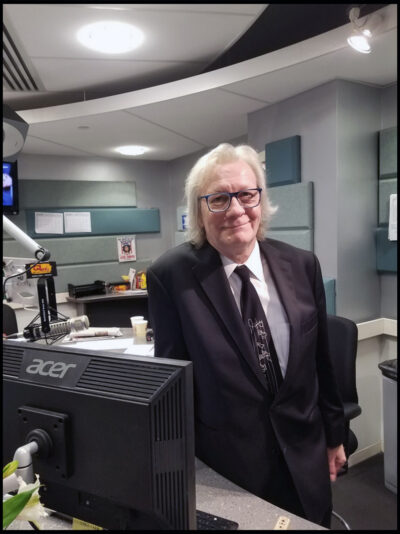 Jim Kerr’s radio odyssey began not in a studio, but on a school bus. A second-grade field trip to WWJ Detroit planted the seed—a moment of wonder that would grow into a lifelong calling. For Kerr, the magic wasn’t just in the microphones or the music—it was in the connection. That early spark ignited a passion that never dimmed.
Jim Kerr’s radio odyssey began not in a studio, but on a school bus. A second-grade field trip to WWJ Detroit planted the seed—a moment of wonder that would grow into a lifelong calling. For Kerr, the magic wasn’t just in the microphones or the music—it was in the connection. That early spark ignited a passion that never dimmed.
By age 14, Kerr was already behind the mic at WYNZ in Ypsilanti, Michigan, a Top 40 station where his youthful voice carried surprising depth and poise. He wasn’t just reading scripts—he was learning how to speak to people, how to make the airwaves feel personal. That natural ease became his signature, even in those formative years.
His rise was swift and steady. At 16, he joined WHMI in Howell, where he juggled weekend announcing with writing advertising copy—a rare dual role that sharpened both his technical and creative instincts. By 17, he was hosting afternoon drive at WOIA in Ann Arbor, blending music with storytelling in a way that hinted at the master communicator he’d become.
A brief stint at progressive rock station WORJ in Orlando gave Kerr his first taste of format experimentation, but it was his return to Michigan at age 18 that marked a turning point. Joining the airstaff at WKNR Detroit—known affectionately as “Keener 13”—Kerr stepped into a station that was more than a broadcaster; it was a cultural force. WKNR’s dynamic Top 40 format and fiercely loyal audience gave Kerr a platform to refine his voice, his timing, and his connection to community.
At 19, Kerr was tapped to host mornings at WDAI in Chicago, an ABC-owned station that introduced him to a larger market and a more competitive landscape. His ability to balance warmth with professionalism made him a standout, and within a year, he was promoted to WLS—one of the most powerful and influential stations in North America. At just 20 years old, Kerr was speaking to millions, and doing so with the same sincerity he brought to Ypsilanti.
Then came New York. In 1974, at age 21, Kerr was transferred to WPLJ, becoming the youngest morning show host in the city’s history. What began as a dream to “last at least a year” in the Big Apple turned into a five-decade love affair with the city, its listeners, and the medium he never stopped believing in.
Detroit Foundations: Crafting a Voice with Soul
Detroit wasn’t just Jim Kerr’s launchpad—it was his proving ground. In the late 1960s and early ’70s, the Motor City pulsed with radio innovation, and Kerr was right in the middle of it. At stations like WYNZ in Ypsilanti, WHMI in Howell, and WOIA in Ann Arbor, Kerr honed his instincts as both a communicator and a curator. But it was at WKNR—affectionately known as Keener 13—where his voice began to take shape as something more than technical skill. It became a vessel for storytelling, rhythm, and emotional connection.
WKNR was no ordinary station. It was a cultural force, a Top 40 powerhouse that dominated Detroit’s airwaves from 1963 to 1967, and even in its final years, it remained a beacon of personality-driven radio. Kerr joined the airstaff at just 18, stepping into a lineup that included legends like Bob Green, Robin Seymour, and Scott Regen. The station’s tight playlists and “intelligent flexibility” demanded precision—but also allowed room for flair. Kerr learned to balance spontaneity with structure, to speak not just at listeners, but with them.
Detroit’s industrial grit and musical richness seeped into Kerr’s cadence. The city was home to Motown, to garage rock, to jazz clubs tucked between auto plants. That blend of hard edges and melodic soul shaped Kerr’s delivery—polished yet personal, playful yet grounded. He didn’t just announce songs; he introduced moments. He didn’t just fill airtime; he created atmosphere.
These years weren’t just technical training—they were emotional education. Kerr absorbed the rhythms of the city, the urgency of its newsrooms, the intimacy of its late-night dedications. He learned how to pivot from a weather update to a Beatles track without losing the thread of connection. He discovered that radio wasn’t just about sound—it was about feeling.
Detroit gave Kerr more than a start—it gave him a foundation built on resonance. And that resonance would carry him from Michigan to Manhattan, from Keener 13 to Q104.3, from a teenage dream to a half-century legacy.
_____________________
Sidebar: WKNR’s Final Chapter & Kerr’s Role in Its Farewell
WKNR-AM, affectionately known as Keener 13, signed off for the last time on April 25, 1972, closing a legendary chapter in Detroit radio history. Once the crown jewel of the Motor City’s airwaves, WKNR had revolutionized Top 40 radio in the 1960s with its tight playlists, charismatic DJs, and “intelligent flexibility.” But by the early ’70s, rising competition from CKLW and FM stations like WABX began to erode its dominance.
Jim Kerr—then known as Robin Stone—was part of WKNR’s final lineup, joining a roster that included John McCrae, Bob Chenault, Greg Innis, and Brother Marcus. Though Kerr’s time at WKNR was brief, it was formative. He witnessed firsthand the emotional weight of a station in transition, and his presence during its final months gave him a front-row seat to the end of an era.
On that chilly April morning, DJ John McCrae delivered WKNR’s final farewell, his voice trembling as he thanked listeners and played The Byrds’ “Turn, Turn, Turn.” Kerr’s own contributions during this period—marked by sincerity and emerging poise—reflected the station’s ethos: radio as companionship, not just content.
Detroit didn’t just teach Kerr how to speak—it taught him how to listen. The city’s rich musical tapestry—Motown, garage rock, jazz, and soul—infused his early broadcasts with rhythm and reverence. At WKNR, Kerr learned to treat every song as a story, every artist as a voice worth honoring.
WKNR’s closing wasn’t just a technical sign-off—it was a cultural moment. And Kerr, even in his early twenties, absorbed the gravity of it. That experience would echo through his career, shaping his understanding of radio’s emotional power and its role in community connection.
_____________________
WPLJ and the Rise of a Morning Radio Icon
 When Jim Kerr stepped into the WPLJ studio in 1974, he wasn’t just filling a time slot—he was stepping into a city hungry for a new kind of morning voice. At just 21 years old, Kerr became the youngest morning show host in New York City history. WPLJ, then transitioning from its progressive rock roots into a more personality-driven format, found in Kerr the perfect bridge between musical credibility and conversational warmth.
When Jim Kerr stepped into the WPLJ studio in 1974, he wasn’t just filling a time slot—he was stepping into a city hungry for a new kind of morning voice. At just 21 years old, Kerr became the youngest morning show host in New York City history. WPLJ, then transitioning from its progressive rock roots into a more personality-driven format, found in Kerr the perfect bridge between musical credibility and conversational warmth.
Kerr launched The Jim Kerr Rock and Roll Morning Show with a tone that was refreshingly real. He didn’t shout, shock, or perform—he spoke. His delivery was neighborly, his humor organic, and his interviews thoughtful. He treated listeners not as an audience, but as companions. That approach resonated in a city where authenticity was currency.
In 1977, Shelli Sonstein walked into Kerr’s studio unannounced—a moment that would spark one of radio’s most enduring partnerships. Their chemistry was instant and electric. Sonstein’s sharp wit and journalistic instincts balanced Kerr’s steady cadence, creating a dynamic that felt both intimate and intelligent. Together, they pioneered a brand of morning radio that prioritized empathy over ego, storytelling over spectacle.
As WPLJ evolved—from album-oriented rock to a rock-leaning CHR format in 1983—Kerr adapted without losing his core. He guided the station through format transitions with grace, helping it maintain relevance while preserving its soul. By 1985, WPLJ had climbed the ratings and even outpaced Z100, a feat that underscored Kerr’s ability to connect across generations and genres.
Kerr’s interviews during this era became legendary. He welcomed rock icons like Robert Plant, Mick Jagger, and Brian May, not with fanfare, but with curiosity. His conversations were less about promotion and more about perspective—he asked questions that revealed character, not just career.
But perhaps Kerr’s greatest contribution was his consistency. Through disco booms, format wars, and the rise of FM dominance, Kerr remained a steady presence. His voice became synonymous with New York mornings—trusted, familiar, and quietly revolutionary.
WPLJ wasn’t just a station—it was a stage. And Jim Kerr, with Shelli Sonstein by his side, turned that stage into a sanctuary for storytelling, music, and morning connection. Their success wasn’t built on gimmicks—it was built on grace.
WPLJ | Jim Kerr | April 15, 1977
Audio Digitally Remastered by USA Radio Museum
Reinventing Morning Radio: Authenticity Over Antics
In an era when morning radio often leaned into shock value and sensationalism, Jim Kerr chose a different path—one paved with consistency, sincerity, and a quiet kind of charisma. While others chased headlines, Kerr cultivated habits. His show opened not with blaring sound effects or outrageous stunts, but with gentle rituals: a warm greeting, a thoughtful reflection, a perfectly timed track that felt like it was chosen just for you. These moments weren’t filler—they were foundational. They made his show feel less like a broadcast and more like a shared experience.
Whether interviewing flamboyant icons like Boy George or fitness evangelists like Richard Simmons, Kerr’s tone remained steady and sincere. He didn’t flatten their personalities—he gave them space to shine, while anchoring the conversation in respect and curiosity. His interviews weren’t spectacles; they were dialogues. He asked questions that revealed character, not controversy. And in doing so, he made even the most eccentric guests feel at ease, and listeners feel like they were part of something intimate.
Kerr never relied on a manufactured persona. He didn’t play a character—he simply showed up as himself. That plainspoken honesty became his trademark. He spoke with the cadence of someone who knew the city’s heartbeat, who understood its moods and rhythms. His voice was rich with musical knowledge, but never condescending. He could pivot from a Springsteen anecdote to a subway update without missing a beat, always keeping the listener at the center.
This steadiness made Kerr more than a morning companion—it made him a cultural constant. For commuters navigating crowded trains, parents packing lunches, or workers clocking in before sunrise, Kerr’s voice was a grounding force. He didn’t just broadcast to New York—he broadcast with it. His show became a mirror of the city’s soul: diverse, dynamic, and deeply human.
WPIX | Jim Kerr | February 19, 1979
Audio Digitally Remastered by USA Radio Museum
The Kerr Effect: Shaping Radio Culture Through Connection and Craft
Jim Kerr’s influence on radio isn’t just about longevity—it’s about redefining what it means to be present. In an era where algorithms curate playlists and AI voices read headlines, Kerr remains a living, breathing reminder that radio is a human art form. His philosophy is simple but profound: be real, be there, and be good to people. That ethos has quietly reshaped programming standards across the industry.
Kerr’s approach to morning radio is rooted in empathy and emotional intelligence. He doesn’t just deliver news or spin records—he listens, responds, and reflects. His broadcasts are infused with a sense of shared experience, whether he’s announcing a snow day, celebrating a listener’s birthday, or spotlighting a local band trying to break through. These moments may seem small, but they’re the heartbeat of his show—and they’ve become a blueprint for hosts who want to build community, not just audience.
His mentorship of emerging voices is equally impactful. Kerr has long championed the idea that radio should be a conversation, not a performance. He’s encouraged young broadcasters to ditch the gimmicks and lean into authenticity. “Just be yourself,” he often says—a mantra that helped him survive and thrive in the most competitive market in the world. Nicole Sandler, who produced Jim Kerr & the Morning Crew at WPLJ, credits Kerr with shaping her entire career: “I learned more from Jim Kerr than from anyone else I worked with in the subsequent decades.”
Kerr’s belief in radio as a living medium has also guided his work beyond the studio. He’s hosted network specials for ABC, CBS, and Westwood One, and served as a substitute host on nationally syndicated talk shows like The Rush Limbaugh Show. Yet even in those high-profile roles, Kerr never lost sight of the listener. His broadcasts are marked by warmth, clarity, and a refusal to treat airtime as a commodity.
Perhaps most importantly, Kerr has defended radio’s relevance in a world of streaming and automation. “Spotify cannot be your friend,” he once said. “An algorithm can’t be your friend. I’m there in real time. Every day, waking people up, letting them know what’s going on. Trying to start their day in a good mood.” That quote isn’t just a critique—it’s a mission statement. Kerr sees radio as a daily act of service, and his listeners feel it.
In a media landscape that often prizes novelty over nuance, The Kerr Effect stands as a testament to the enduring power of presence. It’s not about being loud—it’s about being there. And for fifty years, Jim Kerr has been there—steady, sincere, and unmistakably real.
Q104.3: A Legacy Cemented in Rock and Resonance
When Jim Kerr joined Q104.3 in 2002, it wasn’t just a career move—it was a homecoming. After decades of navigating format shifts and station changes, Kerr found in Q104.3 a sanctuary for his lifelong love of classic rock and his unwavering belief in radio as a personal medium. “It’s the best job I’ve ever had,” he once said, and that sentiment pulses through every broadcast.
Reunited with Shelli Sonstein, Kerr built a morning show that feels less like a production and more like a shared ritual. Together, they’ve cultivated a space where music history isn’t just recited—it’s relived. From deep dives into Springsteen’s catalog to spontaneous reflections on Lennon’s legacy, Kerr’s commentary is steeped in reverence and lived experience. He doesn’t just play the hits—he contextualizes them, weaving in stories, memories, and cultural touchstones that elevate each track into a moment of connection.
But it’s not just the music that defines Kerr’s Q104.3 era—it’s the emotional cadence of his voice. For over two decades, he’s been the city’s morning compass, guiding listeners through triumphs and tragedies, headlines and heartaches. His reflections on New York life—its grit, its humor, its humanity—are delivered with a tone that’s both seasoned and sincere. Whether he’s recounting a subway encounter or sharing a personal anecdote about his early days in Michigan, Kerr brings a lived-in authenticity that feels like a conversation with an old friend.
Listeners don’t just tune in for entertainment—they tune in for grounding. Kerr’s broadcasts offer a sense of continuity in a city that’s constantly evolving. His voice has become part of New York’s sonic architecture, as familiar as the rumble of the 6 train or the buzz of a corner deli. And through it all, he remains humble, curious, and deeply connected to the people on the other side of the dial.
Q104.3 didn’t just give Kerr a platform—it gave him a canvas. And every morning, he paints it with stories, songs, and with masterful brilliance.
_____________________
Sidebar: Iconic Interviews from the Q104.3 Era
Jim Kerr’s time at Q104.3 has been marked by unforgettable conversations with rock royalty and cultural icons. Here are just a few standout moments:
- Brian May (Queen) – A legendary visit in 2013 where May gave an impromptu guitar performance and discussed everything from astrophysics to animal advocacy.
- Greg Lake (Emerson, Lake & Palmer) – A deeply personal interview on Ken Dashow’s “Live at Five,” reflecting on Lake’s musical journey and legacy.
- Jerry Cantrell (Alice in Chains) – A candid 1995 conversation about the band’s self-titled album, Farrah Fawcett, and a three-legged dog named Sunshine.
- Billy Joel – Multiple segments across 2021 and 2024, including reflections on his Madison Square Garden residency and his emotional ties to New York.
- Pete Townshend (The Who) – A 2024 interview exploring Tommy the Musical and the future of The Who on tour.
These interviews weren’t just promotional—they were personal, often revealing sides of artists rarely heard elsewhere. Kerr’s ability to draw out sincerity and storytelling made each segment a masterclass in radio intimacy.
_____________________
Tribute: Kerr & Sonstein—A Partnership That Shaped NYC Radio
In the annals of New York radio, few duos have left a mark as indelible as Jim Kerr and Shelli Sonstein. Their partnership, which began unexpectedly in 1977 when Sonstein walked into Kerr’s WPLJ studio unannounced, has blossomed into one of the longest-running and most beloved collaborations in broadcasting history.
Together, they’ve weathered format changes, cultural shifts, and the evolution of radio itself. Their dynamic—Kerr’s calm, reflective cadence paired with Sonstein’s sharp wit and journalistic fire—has created a morning show that feels both timeless and timely. They’ve interviewed legends, comforted listeners through crises, and celebrated the city’s triumphs with grace and grit.
Their bond isn’t just professional—it’s palpable. As Kerr once said, “If you’re going to spend four hours a day in a little room for decades before the sun even rises, you couldn’t do better than to spend time in that room with Shelli Sonstein”. And Sonstein, equally devoted, has used her platform to champion causes close to her heart, from 9/11 first responders to mental health advocacy.
Together, they’ve become more than co-hosts—they’ve become custodians of New York’s morning spirit. And in doing so, they’ve shown that radio, at its best, is built not just on sound—but on trust, truth, and enduring friendship.
Sidebar: Jim’s Spectacular Radio Resume
Jim Kerr’s storied radio career began at age 14 on WYNZ in Ypsilanti, Michigan, where his natural ease behind the mic first took shape. By 16, he was juggling weekend announcing and ad copywriting at WHMI in Howell, and at 17, hosting afternoon drive at WOIA in Ann Arbor. A brief stint at WORJ in Orlando introduced him to progressive rock formats before he returned to Detroit at 18 to join WKNR (Keener 13), becoming part of its final airstaff.
At 19, Kerr moved to Chicago’s WDAI as morning host, and by 20, he was broadcasting from WLS—one of North America’s most influential stations. In 1974, Kerr arrived in New York City and made history as the youngest morning show host at WPLJ, where he led the Jim Kerr Rock and Roll Morning Show for 15 years.
In the early 1990s, he transitioned to WMXV (Mix 105), adapting his signature warmth to a hot adult contemporary format. Since 2002, Kerr has anchored mornings at WAXQ (Q104.3), where his voice continues to guide New Yorkers with classic rock, heartfelt storytelling, and enduring resonance. Along the way, he’s also hosted specials for ABC, CBS, and Westwood One, and filled in on nationally syndicated talk shows—cementing his legacy as one of radio’s most versatile and beloved voices.
Fifty Years of Mornings: A Celebration Etched in Airwaves
On March 18, 2024, New York City didn’t just celebrate a radio anniversary—it honored a cultural institution. Jim Kerr’s 50th year on the air marked a moment of reflection, reverence, and joy for a city that has woken up to his voice for half a century. The week-long celebration orchestrated by Q104.3 was a masterclass in tribute, blending heartfelt nostalgia with vibrant energy.
The festivities began with Kerr’s beloved Irish Breakfast broadcast live from Connolly’s Pub, where longtime listeners and colleagues gathered to toast the man who had become their morning ritual. That same day, Mayor Eric Adams arrived at the studio with a proclamation in hand, officially declaring March 18th as “Jim Kerr Day” in New York City—a gesture that underscored Kerr’s place in the city’s cultural fabric.
Throughout the week, Kerr was joined by a parade of radio legends and musical icons. Scott Shannon, Elvis Duran, Ryan Seacrest, Broadway Bill Lee, and the casts of The Breakfast Club and The Woody Show all called in to share memories and admiration. But it was the Tuesday simulcast with Howard Stern that became the emotional centerpiece. Stern, known for his candor, offered a rare moment of vulnerability: “You are what we call a real pro, and a real inspiration.” Kerr, visibly moved, responded with characteristic humility: “I love the radio, you love the radio… because we love the people who listen to the radio”.
Wednesday was dedicated to the listeners—the heartbeat of Kerr’s career. Q104.3 aired dozens of recorded tributes from fans who had grown up with his voice. One listener recalled hearing Kerr announce her high school’s snow day in 1982. Another shared how Kerr’s morning show helped him through chemotherapy treatments. These weren’t just testimonials—they were emotional time capsules, proof that Kerr’s voice had become a thread in the fabric of people’s lives.
The week culminated in a breathtaking live broadcast from the top of the Empire State Building. As the sun rose over Manhattan, Kerr’s voice rang out across the skyline, joined by a surprise performance from Gavin Rossdale of BUSH and conversations with Billy Joel, Jon Bon Jovi, and New York Jets linebacker C.J. Mosley. It was a fitting metaphor: Kerr, elevated above the city he loves, still guiding it with grace and grit.
Program Director Eric Wellman summed it up best: “This milestone is impossible to comprehend. Fifty years of mornings in the number one market is a record that will never be touched”.
Jim Kerr | Radio Career Montage | 50 Years in Broadcasting | WLS WDAI WPLJ WPIX WMXV
Audio Digitally Remastered by USA Radio Museum
Honors in Airwaves: Recognizing a Legend
Jim Kerr’s career hasn’t just been applauded by listeners—it’s been formally honored by industry leaders and civic voices alike.
- Radio Hall of Fame Inductee
Kerr’s induction into the Radio Hall of Fame places him among the most revered voices in American broadcasting. It’s a recognition reserved for those who’ve not only endured, but reshaped the soundscape—and Kerr’s five-decade influence makes his place undeniable. - “Jim Kerr Day” Proclaimed by New York City
On March 18, 2024, New York Mayor Eric Adams declared “Jim Kerr Day” in honor of Kerr’s milestone 50th year on the air. The proclamation marked a rare civic tribute to a radio figure, cementing Kerr’s role in the city’s cultural identity. - Industry-Wide Celebration
During his 50th anniversary broadcast week, Kerr was joined by a chorus of radio titans: Howard Stern, Scott Shannon, Elvis Duran, Ryan Seacrest, and more. Their tributes weren’t just congratulatory—they were reverent. Howard Stern called Kerr “a real pro, and a real inspiration,” capping off a simulcast that became the emotional centerpiece of the week.
These honors reflect not just longevity, but impact. Kerr’s career is a benchmark of excellence—a signal that changed the signal for generations to come.
Closing Reflection: A Voice, A Legacy, A City
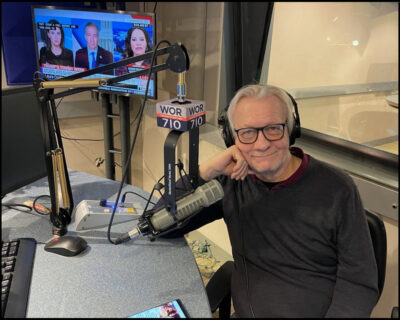 Jim Kerr didn’t just master the art of broadcasting—he became its heartbeat in the city that never sleeps. Through snow days and rock ballads, breaking news and birthday wishes, he’s built a legacy not on volume, but on intimacy. His voice, familiar and faithful, has echoed through the bedrooms, taxis, bodegas, and boroughs of New York for fifty years—and still rises with the dawn.
Jim Kerr didn’t just master the art of broadcasting—he became its heartbeat in the city that never sleeps. Through snow days and rock ballads, breaking news and birthday wishes, he’s built a legacy not on volume, but on intimacy. His voice, familiar and faithful, has echoed through the bedrooms, taxis, bodegas, and boroughs of New York for fifty years—and still rises with the dawn.
For the USA Radio Museum, this isn’t just a retrospective. It’s a celebration of consistency over the years, of real-time presence in a pre-programmed world. It’s proof that radio, when done with empathy and soul, becomes more than a medium—it becomes a mirror. And Kerr’s reflection reveals a legacy of connection, mentorship, and human warmth.
As the airwaves continue to evolve, and radio stretches into the digital unknown, Jim Kerr remains a guiding star—not because he resists change, but because he honors the core of what radio was always meant to be: a voice that speaks to the heart, one morning at a time.
Photo credits: All photos presented here is courtesy of Jim Kerr Facebook page.
_________________________
Contact: jimf.usaradiomuseum@gmail.com
_________________________
A USARM Viewing Tip: On your PC? Mouse/click over each image for expanded views. On your mobile or tablet device? Finger-tap all the above images inside the post and stretch image across your device’s screen for LARGEST digitized view. Then click your brower’s back arrow to return to the featured post.
© 2025 USA Radio Museum. All rights reserved.

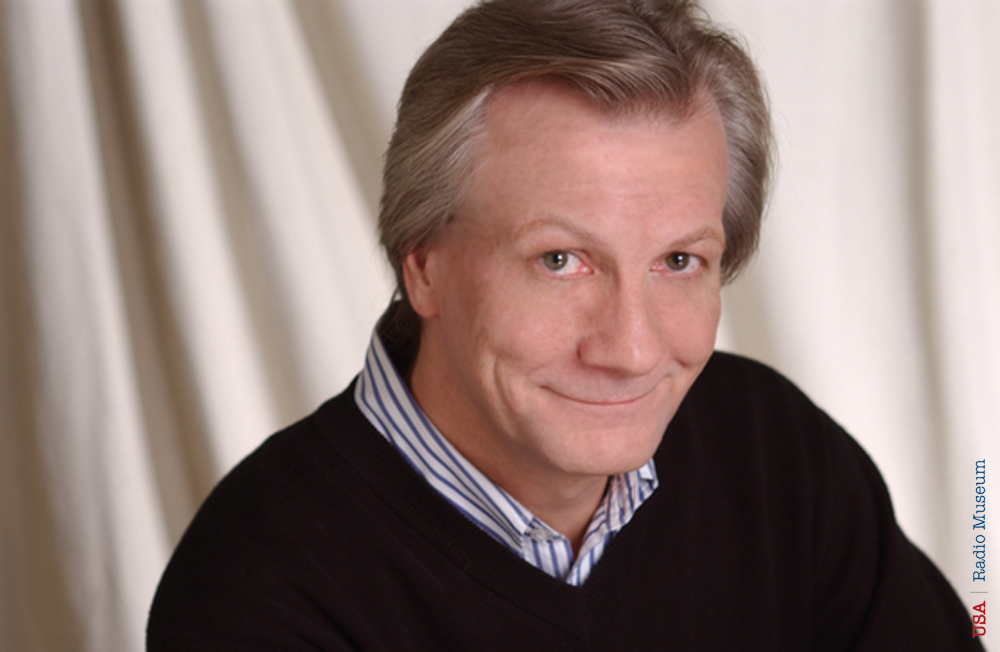
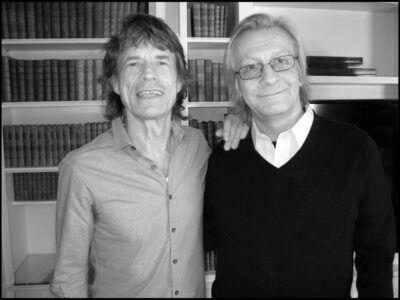
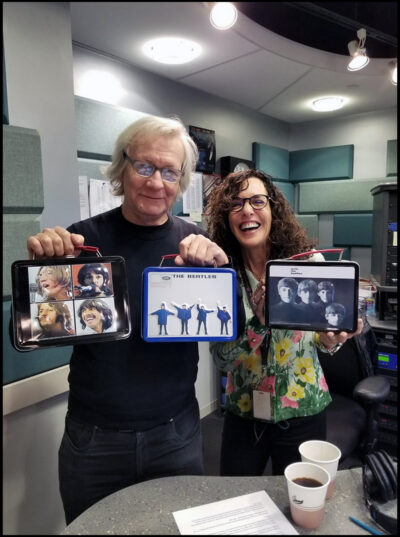
Morris E. Day: “WHAT TIME IS IT?!”
(RING!)
The JAM Jingle Singers: “JIM KERR AND THE MORNING CREW!”
Vaughn B.: “ON POWER!”
The JAM Jingle Singers: “95 FM!”